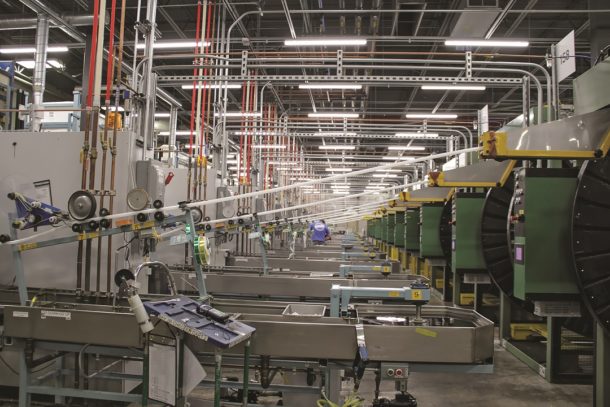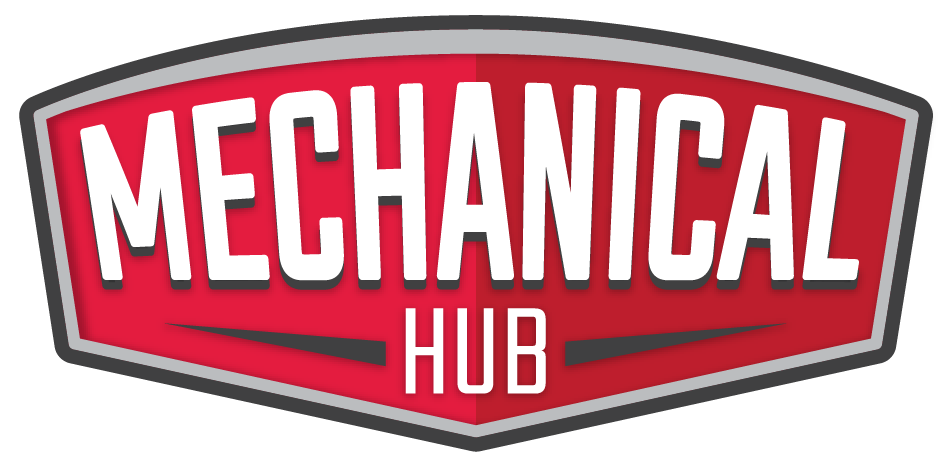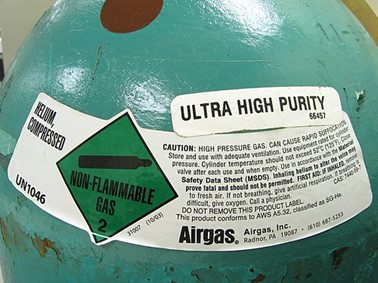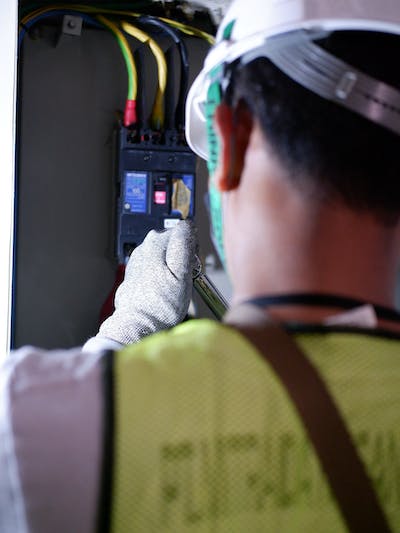It’s easy to think of a manufacturing line as some kind of wider picture puzzle with various slotted elements to figure out. But it’s more like a machine itself, in need of continual maintenance, staff management, and logistics. While you rely on each manufacturing component, they are arguably one of the least important measures in Read more
Whats New

It’s easy to think of a manufacturing line as some kind of wider picture puzzle with various slotted elements to figure out. But it’s more like a machine itself, in need of continual maintenance, staff management, and logistics. While you rely on each manufacturing component, they are arguably one of the least important measures in the system, because without your correct attendance, policies and engineering, it wouldn’t function at all, like an out-of-service train rusting in its lot.

For this reason, keeping manufacturing working smoothly will also require a systemic view. From using transponder repair services with Houghton International https://www.houghton-international.com/service/transformer-repair-services/, to cleaning your line, enforcing regular safety checks and knowing when to halt production, it’s important to make sure everything is in place before you press the button to begin production.
In this post, we’ll discuss three systems that keep your manufacturing process, and why you shouldn’t operate without them:
Logistics
The logistics of your manufacturing line will determine if it can operate with care. For instance, a healthy supply of raw materials must be scheduled, stored and prepared so that it can be used in your manufacturing process. This means working out reliability clauses with suppliers and having backups on hand. It also means being able to transport and load certain items carefully from place to place, safely, and with caution. For instance, qualified forklift drivers working in your warehouse must follow stringent safety protocols to ensure logistics are well-designed, but also safe in a busy, moving environment.
Human Resources
Human resources is essential to plan for, because people are the most important element of your manufacturing line, even if it’s mostly automated. Regular safety review, accountability checks, allowing staff to report if they feel bad or need time off work (an unfocused employee in a manufacturing line can be a dangerous thing), all of this can be curated and enforced by your human resources department. Moreover, they have the power to promote or discipline based on performance, and the latter especially if basic safety features, like the upkeep of maintenance or the replacement/proper storage of safety gear has not been followed. This way, you ensure the people working your line are the best for the job, and always trained correctly.
Inventory Management
Of course, without good inventory management, then tracking the products coming and going from your manufacturing line, calculating the number of items at various stages of production, and ensuring your warehouse is properly stocked will be harder to do. A scan system that can tag labels will help you keep appropriate counts, as will many stage checkers that allow you to properly understand where a miscount may have occurred will all be worth your time to plan.
With this advice, we hope you can keep your manufacturing process keep ticking over in the best way; giving you the time and space to optimize, develop efficiency, and also ensure safety at all levels, which is always the most important thing.

Crawl spaces are often overlooked when cleaning and maintaining our homes. We focus on keeping the visible areas of our homes clean, but the crawl space is just as important. Failing to keep the crawl space clean can lead to serious problems, such as mold and water damage. Taking care of your crawl space will Read more
Crawl spaces are often overlooked when cleaning and maintaining our homes. We focus on keeping the visible areas of our homes clean, but the crawl space is just as important. Failing to keep the crawl space clean can lead to serious problems, such as mold and water damage. Taking care of your crawl space will not only protect your belongings and home, but it can also save you money in the long run.

Preventing Crawl Space Damage
Crawl spaces are often ignored when it comes to home maintenance, but keeping this area of your home in good condition is important for preventing damage from pests. Termites and other pests can enter your home through the crawl space, and they can do a lot of damage once they’re in. Insulating your crawl space is one way to help prevent these pests from getting in and causing damage.
So make sure you have a crawl space dehumidifier installed in yours. They will keep your home smelling fresh by removing moisture and other odors, and they’ll help to prevent mold and mildew. If you see any signs of mold or water damage, don’t wait to fix them. Just call the crawl space insulation company, and they will get that out to your home quickly.
Crawl Space Insulation Types: How To Choose?
There are a variety of different crawl space insulation types available. Understanding the different types available and how they work will help you to make an informed decision when it comes time to purchase. There are three main crawl space insulation types:
Open-cell insulation is often used in the walls, floors, and ceilings of homes. This type of insulation is typically less expensive than other types of insulation. Open-cell crawl space insulation works by trapping air within tiny pockets between its fibers. The air trapped in these pockets acts as a buffer, slowing the transfer of heat from the warm side to the cool side. The insulation’s open-cell design is ideal for use in crawl spaces because it allows the moisture that collects on the cool side of the insulation to evaporate into the atmosphere.
Closed-cell insulation is often placed under the subfloor of a home. This type of insulation is typically more expensive than other types because it is made from more material. Closed-cell crawl space insulation works by trapping air within tiny pockets between two pieces of plastic. The type of insulation used in a crawl space depends on the climate.
In warmer climates, fiberglass insulation is typically used because it is inexpensive and easy to install. In colder climates, closed-cell insulation is often preferred because it does not trap moisture as readily as open-cell insulation.
Reflective insulation is an effective way to prevent crawl space damage from termites and other pests. It is a material that reflects heat back into the crawl space, keeping the area cooler and preventing damage to the structure. Reflective insulation is available in a variety of sizes and thicknesses and can be installed by a professional or do-it-yourselfer.
Conclusion
Preventing crawl space damage is essential to protecting your home from these costly repairs. Some simple steps you can take to prevent damage include: sealing any cracks or openings in your foundation, keeping the area well-ventilated, and using termite-resistant materials when building or repairing your home.
By taking these preventive measures, you can keep your crawl space free of damage and help ensure your home’s long-term stability.

Welding is a much-needed profession and a valuable trade to learn. Those interested in becoming welders can attend a trade school or find an apprenticeship. There are different types of welding, with MIG welding being one of them. While MIG welding requires a specific set of tools, many people question whether MIG welding uses DC Read more
Welding is a much-needed profession and a valuable trade to learn. Those interested in becoming welders can attend a trade school or find an apprenticeship. There are different types of welding, with MIG welding being one of them. While MIG welding requires a specific set of tools, many people question whether MIG welding uses DC (direct current) or AC (alternating current).
 What Is MIG Welding?
What Is MIG Welding?
MIG welding is known as gas metal arc welding, and MIG stands for metal inert gas. To MIG weld, you must feed a filler metal through the welding machine that acts as a heat and electrical current supplier. The filler metal provides the current, which then maintains the welding arc. The machine also produces an inert gas to prevent the arc from reacting to the air around it. The inert gas used in MIG welding is typically argon and helium, but also carbon dioxide and oxygen. Carbon dioxide is relatively resistant to chemical changes but less so than helium and argon. One of the downsides to using carbon dioxide as gas in MIG welding is that it’s more difficult to control and requires more cleanup due to weld spattering because it’s only semi-inert.
How Are AC and DC Different?
AC stands for alternating current, which means that the current periodically changes directions, while in DC, the charge only flows in one direction. The differences in the current between AC and DC have to do with how the electrons move through the conductor. Since welding requires a lower frequency and more precise handling, most MIG welders operate with DC rather than AC. However, MIG welders can use AC, but it’s not needed.
When Is AC Welding Used?
Welders typically use AC for arc welding when they want heavy plate welds, fast fills, and are using TIG welding. DC welding is better for those working with thinner metals. Since AC is unpredictable and unreliable for welding, there are certain materials where a welder would use AC. These include heavy metals, thick metals, aluminum, non-ferrous metals, and high-temperature welding.
Why Is DC Used in Welding?
Direct current is more reliable and provides a stable arc, which provides for a smoother welding output with less weld spatter. Welders also like DC welding as they have better control over the weld, and it’s good to use on thinner metals. Depending on their needs, welders can also choose whether they want a positive or a negative electron flow. If they use DCEN, which is a negative electron charge on a direct current, it welds the metal quickly. If they use DCEP, a positive electron charge on a direct current, it deeply penetrates the metal.
Is MIG Welding DC or AC? In conclusion, most of those who use MIG welding use direct current as the current is more reliable and provides a stable arc. If you’re someone who does a lot of MIG welding, it makes sense to rent MIG welding equipment that helps you meet your goals.

Electricity has numerous benefits for humans when utilized in the right way. However, when misused at home or in a workplace, there could be grave and irreversible consequences ranging from fire outbreak to even death. It is essential to have top-notch electrical planning and design done by electrical professionals. Preventing electrical damage should be a Read more
Electricity has numerous benefits for humans when utilized in the right way. However, when misused at home or in a workplace, there could be grave and irreversible consequences ranging from fire outbreak to even death. It is essential to have top-notch electrical planning and design done by electrical professionals. Preventing electrical damage should be a priority at every workplace. In this article, we will be sharing safety tips to prevent workplace electrical hazards.
Consult an Electrical Expert
If you experience any electrical issues or feel that an electrical hazard will happen soon, whether in your equipment or the wiring, then the safe and smart option here is to contact a professional electrician. Don’t attempt resolving it yourself, as this could even make the fault worse and result in a more serious problem.
Make Use of Caution and Danger Tags
If you notice any damaged sockets, then you should report them and utilize danger tags so that others do not use them or remain vigilant around them. Areas with heavy-duty hazardous equipment or live wires should have caution tags as well.
 Make Sure Every Electrical Appliance Is Certified
Make Sure Every Electrical Appliance Is Certified
Ensure that any electrical appliance and piece of equipment in use at the workplace is certified by a nationwide identified laboratory and bear approved markings. Ensure you carefully read the manufacturer’s instructions before using any electrical appliance and equipment.
Make Sure Every Electrical Component Stays Dry
Everyone knows that electricity never does well around water. It is one of the most important laws of electricity. Never utilize any electrically powered equipment and appliances in wet places and ensure that all your power cords are above the water level. If any appliance has been exposed to water or any form of liquid, do not use it under any circumstance. Immediately unplug and dry it.
Protect The Power Boards
Always think about and safeguard the power boards. To do this, you should integrate overload protection into your power boards. Furthermore, ensure your power boards are ventilated, clean, and above the floor wherever possible.
Educate Your Staff On Using Electrical Equipment
Many fatalities that occur in the workplace are a result of a lack of training on how to deal with such circumstances and ignorance among employees. You have to ensure you give your staff the proper training on how to handle electrical appliances and equipment related to their jobs. Employees need to also know how to recognize electrical issues and what steps to take in the case of an emergency.
Properly Manage Powerpoints
Powerpoints will become quite dangerous if not maintained properly. Here are some tips you can consider to aid manage powerpoints:
- Avoid overcrowding the powerpoints and don’t use multi-plugs
- Regularly test your plugs and insert the plugs fully into the socket
- Label every socket
- Avoid pulling the cord, as this may result in breakage
Utilize Electric Fuses
The basic use of electrical fuses is to safeguard electrical appliances from extreme currents and to hamper mismatched loads or short circuits. They play the role of minute circuit breakers, making them indispensable in the workplace. High-quality electrical solutions don’t only prevent electrical hazards but also help the daily operations of your workplace. You could also go a bit further by researching general safety measures which will aid in maximizing the overall safety of your business.

Work safety should be a key priority on any manufacturing or production floor. There is all manner of risks that you, as a manager or employer, should be ready to tackle. However, for as much as things such as slipping hazards and mechanical risk get attention, sometimes other types of safety, like fire safety, can Read more
Work safety should be a key priority on any manufacturing or production floor. There is all manner of risks that you, as a manager or employer, should be ready to tackle. However, for as much as things such as slipping hazards and mechanical risk get attention, sometimes other types of safety, like fire safety, can be minimized. Fire risks are very prevalent on the average production floor, so here are a few tips to make sure that you’re giving them the seriousness and attention they demand.

Testing and maintenance of equipment are essential
Of course, a great degree of the risk that is unique to the manufacturing environment is the machinery and electrical equipment that is used much more frequently than in other settings. The routine maintenance of your equipment, from forklifts to stationary machines, is vital to ensure that faults are spotted and fixed as soon as possible. PAT testing is also crucial for any portable electrical equipment, so that you can spot and remove faulty equipment. Electrical hazards are also fire hazards, so they’re doubly worth staying on top of.
Equipping the workplace
There are all manners of equipment that you should ensure you have in accessible and appropriate places to help you mitigate any fire that might start. Fire extinguishers are crucial, and you should ensure that you have the right class of fire extinguishers ready to face the specific hazards and types of the fire faced in a manufacturing or warehouse environment. Aside from that, you need to take the time to install fire alarms, fire doors, and fire signage. Consider whether or not a sprinkler system would also be a good investment as, in some cases with machinery, it’s not always the most effective solution.
Get ready for the firefighters
Aside from the fire safety precautions and equipment that you can keep on your own property, you want to make sure that you’re able to offer some assistance to the firefighters when they arrive on the scene as well. It is especially important for commercial buildings, especially if they are nowhere near any hydrants, to make installations like Cease Fire Dry Risers. Then, the firefighters can connect their equipment to their risers to get access to the water necessary to help combat fires that are beyond your control, alone.
Get a more specific idea of your risks
The tips above can make sure that you have taken care of the basics of fire safety that every manufacturing plant should have. However, your workspace is also going to have its own particular risks and circumstances that need to be taken into account. With that in mind, teams like Warringtonfire can help you carry out the fire safety audit that you need. You can get a much better idea of the specific and individual risk elements in your property and follow their recommendations to ensure they are addressed to reduce and mitigate the risk as best as possible.
Fire safety is crucial in a manufacturing setting. Hopefully, the tips above help you give it the priority that it deserves.

 What Is MIG Welding?
What Is MIG Welding? Make Sure Every Electrical Appliance Is Certified
Make Sure Every Electrical Appliance Is Certified